In June 2016, DC Comics kicked off the start of its Rebirth initiative. After a wave of criticism surrounding the way they have treated their characters’ rich histories since 2011’s New 52 relaunch, DC has decided to rebrand. They hope that by restoring their characters’ pasts, they will restore readers’ faith in them as well. Do they succeed? That’s what the Comics Beat managing editor Alex Lu and entertainment editor Kyle Pinion are here to discuss. Book by book. Panel by panel.
Note: the reviews below contain **spoilers**. If you want a quick, spoiler-free buy/pass recommendation on the comics in question, check out the bottom of the article for our final verdict.
 Aquaman #25
Aquaman #25
Writer: Dan Abnett
Artist: Stjepan Sejic
Letterer: Steve Wands
I’ve never been sold on Aquaman before. I’m not biased against him the reasons that people stereotypically are– the whole “oh his schtick is talking to fish” thing– I mean, come on, who wouldn’t like to have the ability to communicate with animals? No, my problem with Aquaman is simply that there has basically never been a long term dramatic throughline for the character that I’ve identified with– until now. With Aquaman #25, Sunstone artist Stjepan Sejic makes a gorgeous debut on this series, teaming up with writer Dan Abnett to prove that this politically topical version of Aquaman is the one I’ve been waiting for all along.
Over the past year, Dan Abnett and a crew of artists ranging from solid to excellent have crafted a version of Aquaman that is different from previous iterations of the title in subtle, but important ways. When Kyle and I spoke to Abnett last year, he talked a lot about working to build up the world of Atlantis– fleshing out its culture and its inhabitants instead of simply focusing on King Arthur and his love, Mera. That focus on making Atlantis a real, breathing city allows the book’s creative team to craft stories that have emotional impact. Instead of simply fighting random monsters or watching faceless Atlanteans die, Arthur has to contend with people that we recognize and sometimes even care about.
Such as it is in Aquaman #25, which kicks off a new arc and establishes a new status quo for the series. In the previous arc, Arthur Curry was unseated from the throne of Atlantis. He was betrayed by the very council that stood alongside him throughout several wars and cast aside in favor of Corum Rath, an Atlantean nationalist who we last saw in Aquaman: Rebirth #1. At the end of the arc, Arthur was even seemingly murdered by one of his most loyal comrades, Commander Murk of the Atlantean Royal Guard. Now, with Rath in charge, the powers-that-be have begun “systematically” exterminating citizens with “mutations” as well as eliminating anyone sympathetic to Arthur. Rath has also used old Atlantean magical artifacts which had been locked away for centuries in order to seal Atlantis off from the outside world with a wall of coral. It’s obvious that Aquaman is positioning itself to tell a story that echoes America’s current reality as both it and Atlantis enter a war for their respective souls.
Clearly, Aquaman isn’t the only series on the block trying to tell this story right now. Television, novels, non-fiction, news stations, podcasts, and other comics are all trying to grapple with how nationalism came to power in the United States and what we can do to stop it. What Aquaman does particularly well, however, is portraying Rath and the council that betrayed our hero, Arthur, as a group of individuals who are clearly in the wrong, but not unprincipled in their actions. Indeed, when the high council of Atlantis chooses Corum Rath as king over Arthur, they do it because Rath has a very clearly defined “Atlantis first” philosophy. He may be cruel and violent, but he takes obvious physical action to secure Atlantean lives in the short term. On the other hand, Arthur is very rarely ever in Atlantis– he’s always off fighting monsters far away from home or, at worst, on land. He made a principled decision to surrender to America to end a war he didn’t start because he knew that it was the only way to save Atlantean lives, but the people he saved took Arthur’s words of surrender literally and saw Arthur’s decision as an act of weakness rather than strength. Arthur’s philosophy has long term payoffs that require actions that seem like inaction in the short term– and indeed, when lives are being lost to bombs, sometimes it’s hard to convince people that the short term isn’t the only thing that matters.
And we haven’t even gotten to the main attraction of Aquaman #25 yet. I’ve been a big fan of Sejic’s art for years. His painterly style renders a heightened and idealized style of reality– one where sensuality and fantasy cast a beautiful glow over scenery and characters on every page. It’s a style that made Sunstone‘s exploration of romance and kink work and it’s what makes his debut on Aquaman absolutely singular as well. Under Sejic’s hand, Atlantis truly feels like a city of myth. Previous artists in this run of the series have rendered Atlantis quite nicely, but none of them have made the city truly feel distinct from locales we’ve visited on the surface. Here, we get gorgeous exteriors of brightly lit windows carved into coral shelves. We see a lime green light rising up from the deep sea, casting an ethereal glow on ships with designs inspired by stingrays and mollusks. If Corum Rath’s reign establishes a more traditional tone for Atlantis’ culture, it only makes sense for Sejic to render Atlantis in a way that evokes more classical fantasy illustration and similarly inspired comics such as Rat Queens.
Letterer Steve Wands takes great care to pair his work with Sejic’s art in Aquaman #25 as well. When he letters for himself, Sejic tends to accentuate his word balloons with long, winding, and wispy tails. Wands ditches Sejic’s trademark wisps here but otherwise echoes Sejic’s style quite effectively. He even refrains from outlining the balloons, allowing them to blend into the panel in a way that further immerses the reader in the magical world that Sejic has crafted.
Aquaman #25 is more than the beginning of a new arc. It’s the beginning of a new era for Aquaman. Oft-maligned but even more often without purpose, Arthur finally has a cause that feels important to our era. As he takes to the streets as a vengeful vigilante of Atlantis’ most dangerous streets in the first steps of a long campaign to reclaim his throne, he’s forced to grapple with the fact that his own people have rejected his globalist philosophy of diplomacy and given into their most jingoistic instincts. Will he be able to sway them back to his side? Will he be able to save the soul of his nation? For our sakes, I certainly hope so.
Final Verdict: Buy
 Lobo/Road Runner
Lobo/Road Runner
Writer: Bill Morrison
Artist: Kelley Jones
Colorist: Michelle Madsen
Letterer: Rob Leigh
Generally, I look at inter-company crossovers with a raised eyebrow. While I enjoyed a couple of the books DC Comics co-created with Hanna Barbera earlier this year, these titles and most like them are nostalgia vehicles. They don’t have a ton to offer outside of that fun feeling you get when two characters you like meet up for the first time. That’s not particularly effective for a kid like me who wasn’t actually around to watch Hanna Barbera or Looney Tunes cartoons when they were dominant on the airwaves. That said, there is the occasional crossover comic that transcends the simple pleasures and produces a legitimately awesome story– Lobo/Road Runner is one of those comics.
Okay, maybe I’m overselling this book a little bit. Lobo/Road Runner isn’t exactly a book that is going to reveal some hidden truth about mankind or the universe to readers. It’s actually rather simplistic, really. The story is basically about Wile E. Coyote hiring Lobo to capture the Road Runner for him while Wile attempts to execute a hit on Lobo’s behalf. The plot is a classic switcharoo that highlights just how similar these two characters really are– both in their resilience and their hapless natures.
In the lead story, the creative team does a great job of filling the book with the morbid jokes and zany hijinx one would expect from a classic Road Runner cartoon. For most the issue, Wile ends up getting beaten up and battered around by the Green Lantern he’s supposed to kill, demonstrating the limits of cartoon physics. Meanwhile, the team takes advantage of Lobo’s less pliant but equally indestructible body in his conflict with Road Runner. We get to see the main man’s head pop after a grenade lands in his mouth and even see his whole body smashed to smithereens after he uses the scorched earth tactic of launching a nuke at the mutated bird. We get nice little nods to the particular backgrounds of all our leads as well. I particularly enjoyed seeing Lobo’s love of space dolphins get revisited and seeing Wile E. Coyote figure out that he actually can speak.
Then, in the backup, which is written and drawn by Morrison and lettered by Saida Temofonte, things get even more referential and meta as Lobo realizes that his debaucherous antics are now set in an all-ages comic replete with a more traditionally cartoonish art style. The bounty hunter is incredibly disturbed to learn that his potty mouth is now censored, yet the Road Runner can still violently abuse him at every turn.
If I had one criticism of this book, I’d say that it’s a tad bit long. I know these books are specials, but I haven’t found one story thus far in these DC/Looney Tunes crossovers that really needed to be 30~ pages. Even Lobo/Road Runner drags during some flashback scenes to the Road Runner’s and Wile’s origins.
That said, overall, I highly recommend picking up Lobo/Road Runner if you’re looking for a fun and breezy read. It really captures what makes Road Runner one of the few classic cartoons that I really loved as a kid as well as what makes Lobo one of my favorite characters in the DC Universe. It’s all about the insanity and the violence, man.
Final Verdict: Buy
 Round-Up
Round-Up
- This week, the War of Jokes and Riddles kicks off in Batman #25. Scott Snyder and Greg Capullo teased this war during their run on Batman. It takes place after Zero Year and centers around Joker and Riddler. This hasn’t been a plot I was particularly keen on following up on and it’s especially annoying to see right after the huge cliffhanger Tom King and David Finch left us on two weeks ago. I’m not even sure why this premise is so off-putting to me, to be honest. If I had to wager a guess, I’m probably just still tired of bombastic plotlines that promise massive carnage but questionable amounts of character development. It feels particularly out of place on this run of Batman because King has made Bruce more mortal and relatable than perhaps we’ve ever seen him before. This supernatural battle just feels a little out of step by comparison. All this grousing aside, this first issue of the arc is a solid one. It’s mostly prelude to the actual war, but Mikel Janin returns to the series with stunning art that keeps the series in “buy” territory for me.
- Batwoman wraps its first arc today with the release of issue 4. I’ve enjoyed this run so far, although I do still think this run has not had as bombastic a debut as early previews and marketing led me to believe– but that has less to do with the quality of the title itself and more to do with the way it’s been solicited. It’s clear now that the creative team is in for the long haul with Kate Kane, wrapping up her first story on the island of Coryana and introducing a surprising new villain at the very end of the story. Not only that, but it seems like Batman himself might be more involved in Batwoman’s activities than I initially expected as it seems like there are some questions being raised about Kate’s morality.
- At this point, I think I may have lost the plot to Cave Carson Has a Cybernetic Eye a little bit. The series’ ninth issue comes out today and while it continues to be, by far, one of the most gorgeous books in the DC or Young Animal lineups, it’s deviated a bit much from what I initially enjoyed about it; namely, the “sad dad” stuff. Given that this is a book co-written by Gerard Way, I knew things would get weird, but I didn’t expect them to stay this weird for this long. I need a little bit of a breather and some pathos before we dive further into the zany stuff, I think. But that’s just me!
Nightwing #23 continues to build a plot about illegal weapons being smuggled through the streets of Bludhaven, but as I mentioned two weeks ago, the real star of the show is the relationship between Dick and his girlfriend, Shawn. I continue to ship these two so hard, but this issue throws a couple of new wrenches into the works of their romance. After the previous arc’s pregnancy scare, Dick and Shawn have grown apart a bit because of a fundamental divide in their philosophies– Dick, having been raised by someone solely motivated by grief and anger, is also in constant combat with those emotions himself and doesn’t want his children to end up driven by that negativity. He senses that anger still drives Shawn, though, and that scares him about the future with her. He might not be wrong, given her past as a villain and the fact that, as this issue reveals, she’s reconnected with a criminal partner from her past…
- DC Comics Bombshells #29 brings us one step closer to the end of this chapter of the Marguerite Bennett-penned alternate history saga that features stylized takes of DC’s greatest superheroines stepping into the front lines of WWII. I know I haven’t talked about this title much in the past, but last week, I spoke to Bennett about the new Bombshells series, Bombshells United. In preparation for that, I revisited some of the Bombshells material I had missed and absolutely adored what I found. There’s a lot of great characterization in this series that you don’t typically see in more traditional books. You get looks into Jewish history, the way that people from many walks of life are affected by the war, and a variety of redemption arcs that prove you can be better than who you used to be. If that’s not great comics, I don’t know what is.
- While I really enjoyed Lobo/Road Runner, Wonder Woman/Tasmanian Devil was rather disappointing because I felt like it didn’t totally capture the essence of what makes these characters click. It was cool to see them together but Diana in particular was written with this affected old-fashioned voice that I don’t think matches the savvy she’s displayed in other titles featuring her.
Miss any of our earlier reviews? Check out our full archive!


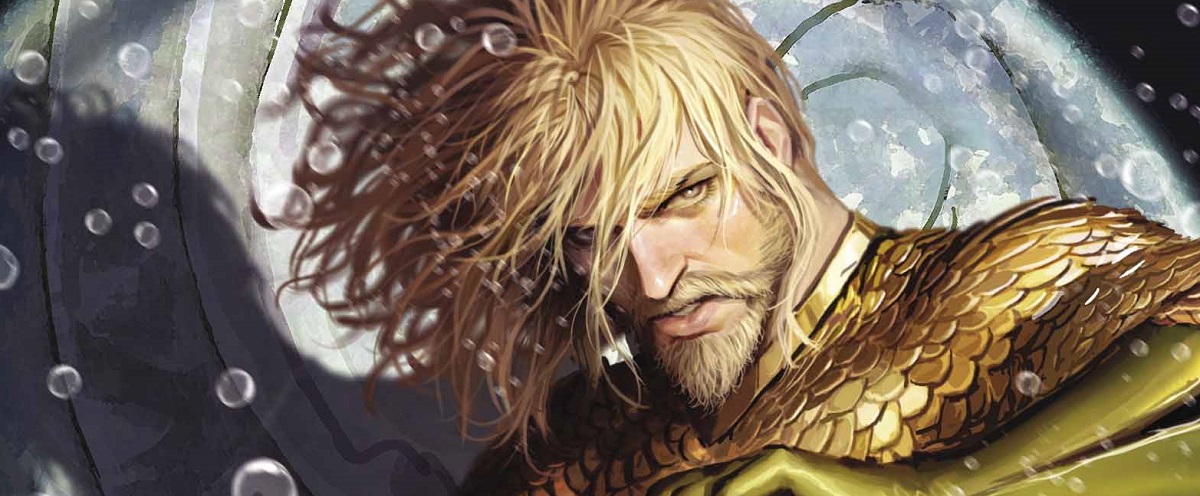
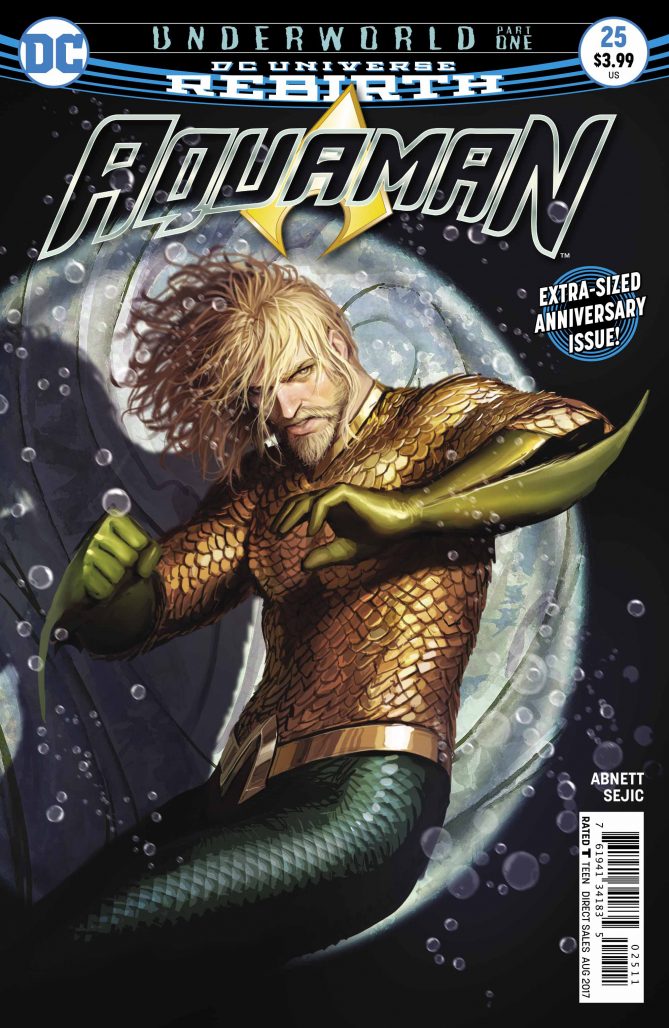
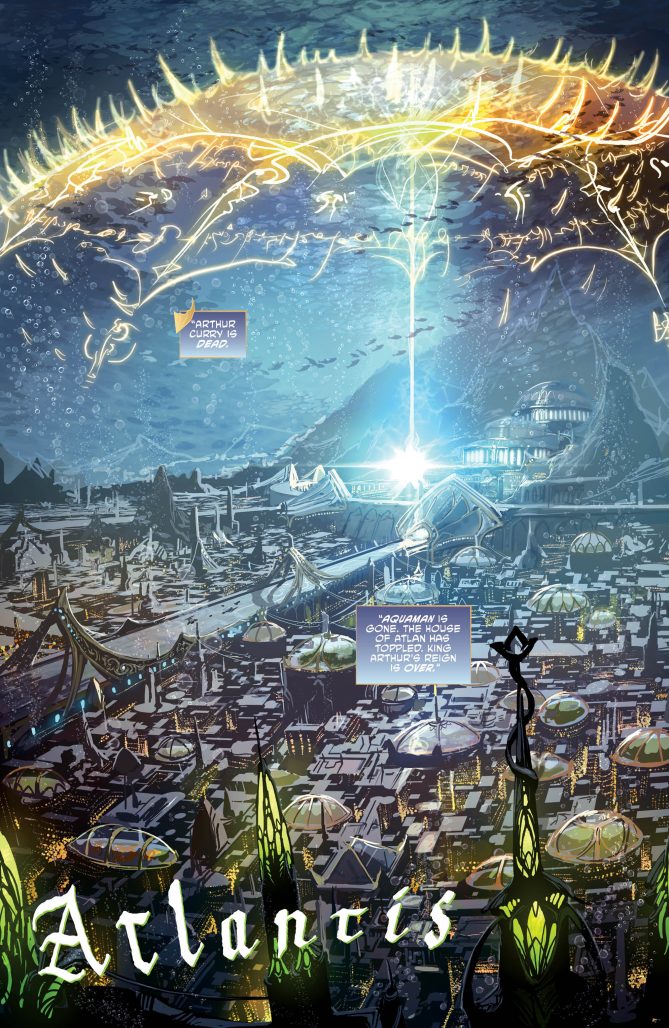
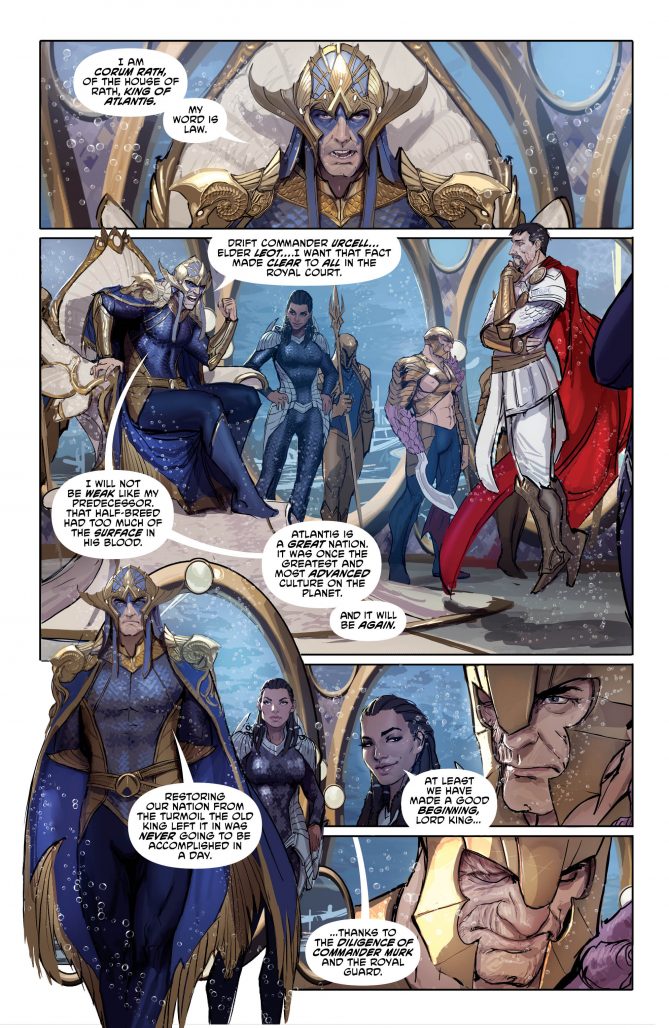
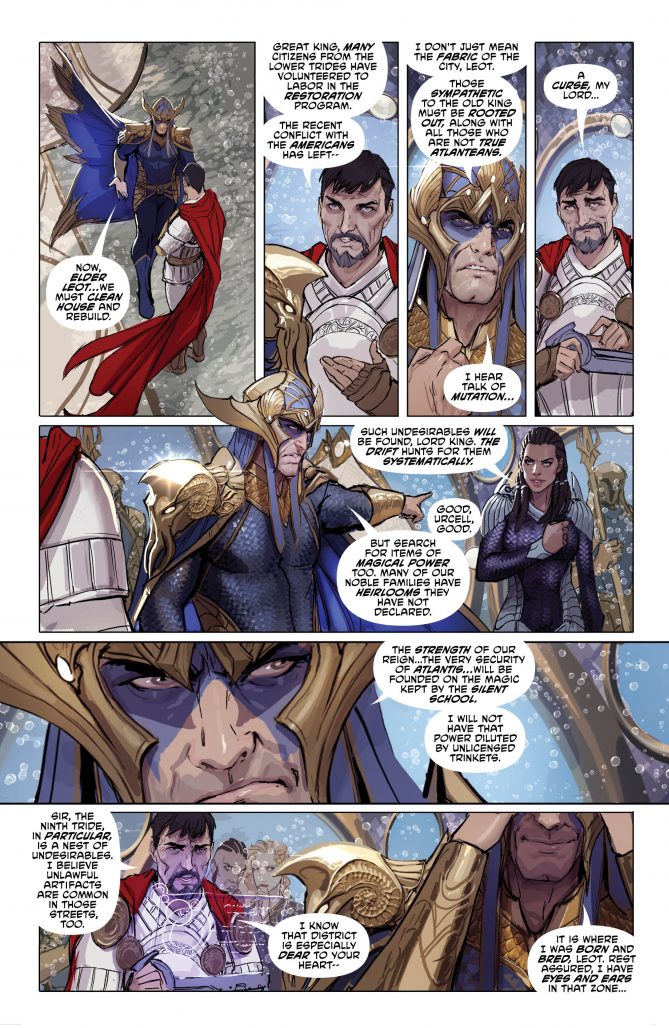
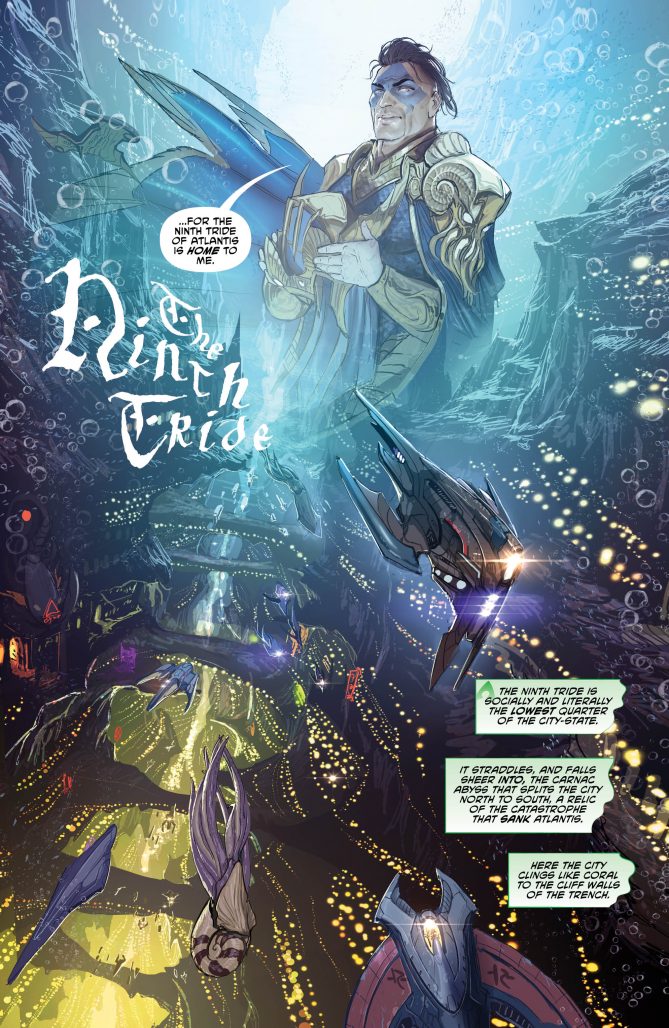
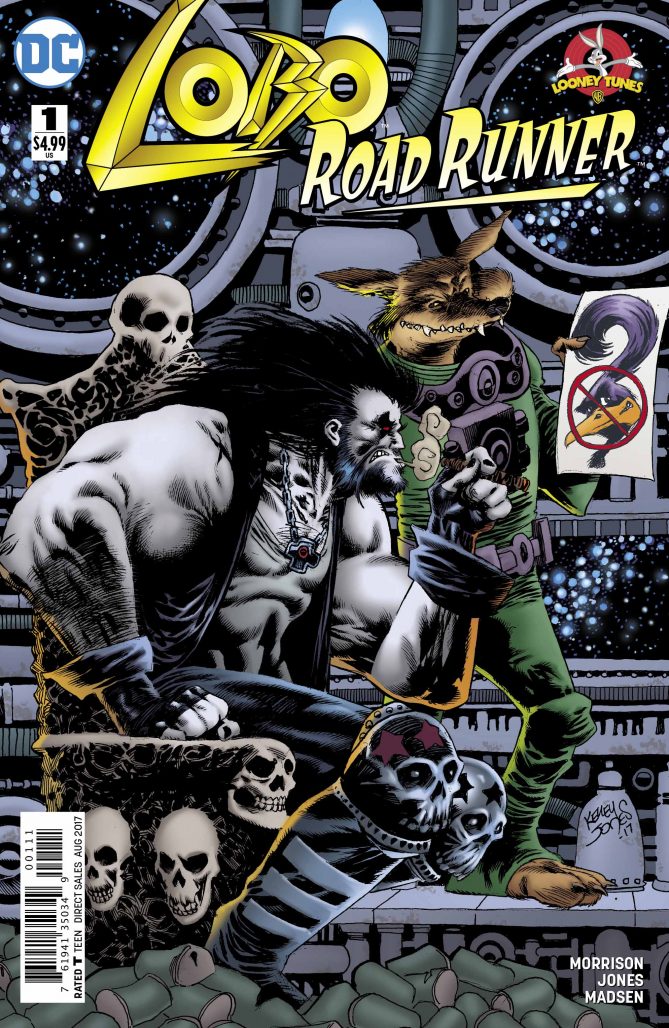
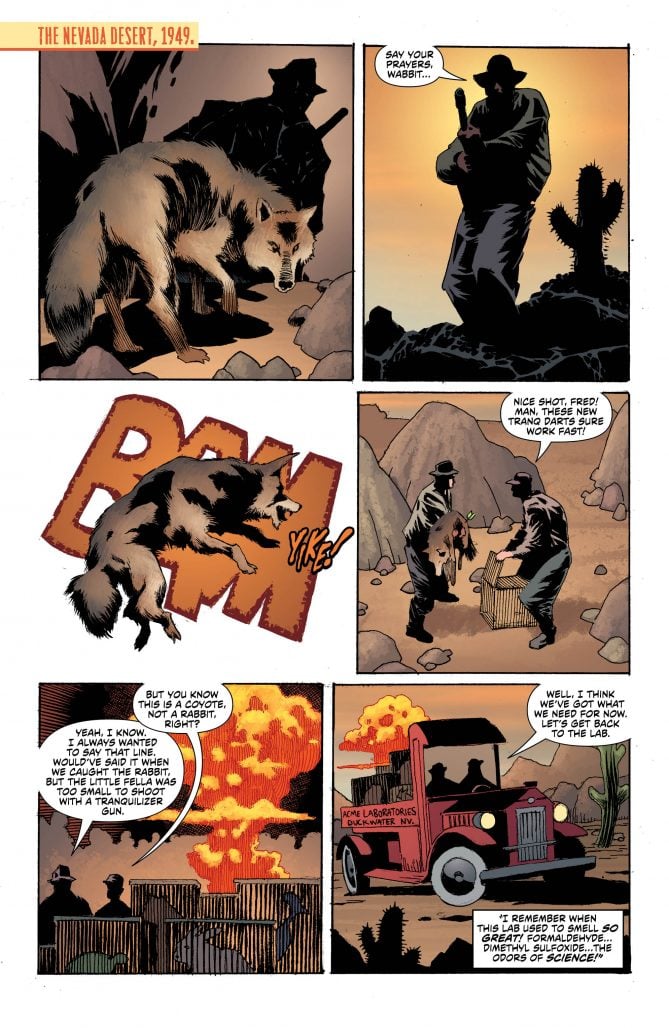
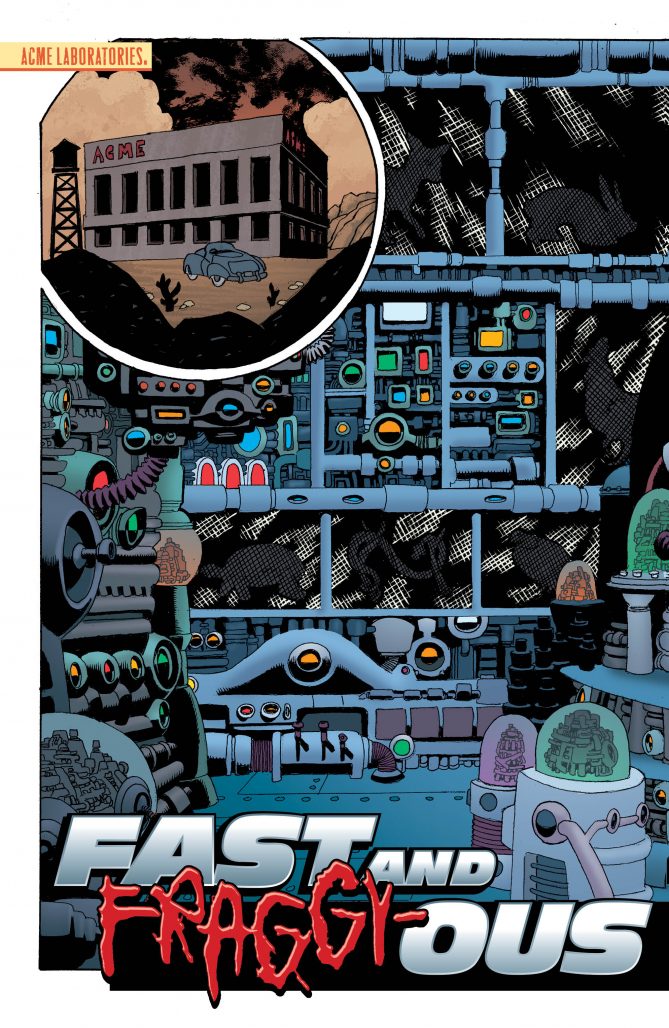
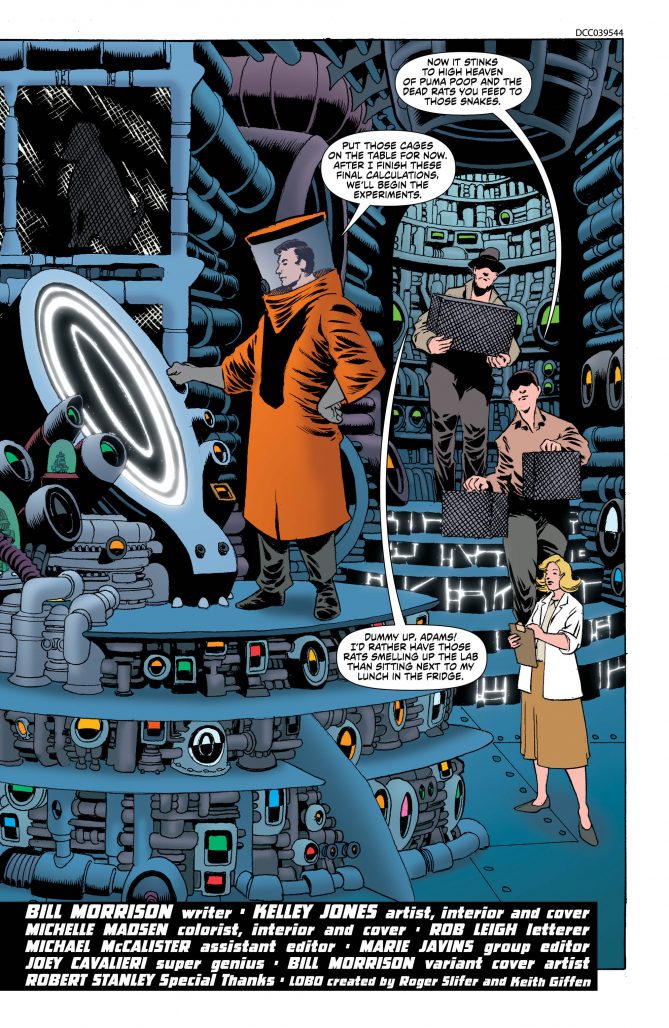
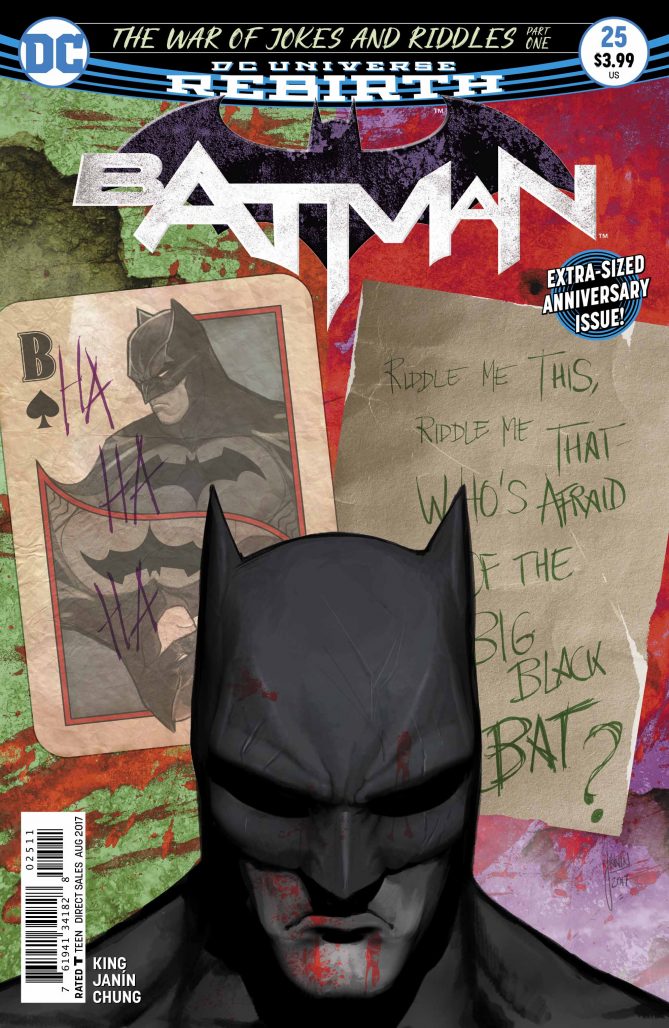
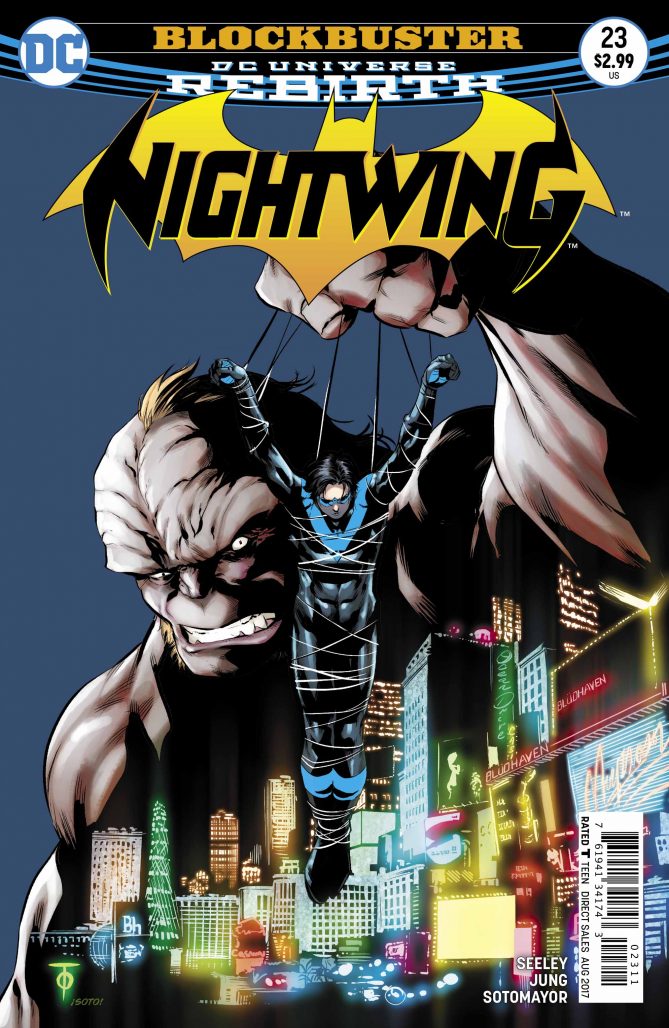





I think I agree with every point you made this week. Aquaman’s new status quo is wonderful. Batman is maddening and Cave Carson is having some deep structural issues.
Aquaman was my book of the week, in a week that’s already loaded with great stuff (Batman, Nightwing, Super Sons, etc). The art is absolutely phenomenal, and really makes the entirety of Atlantis come to life.
Comments are closed.